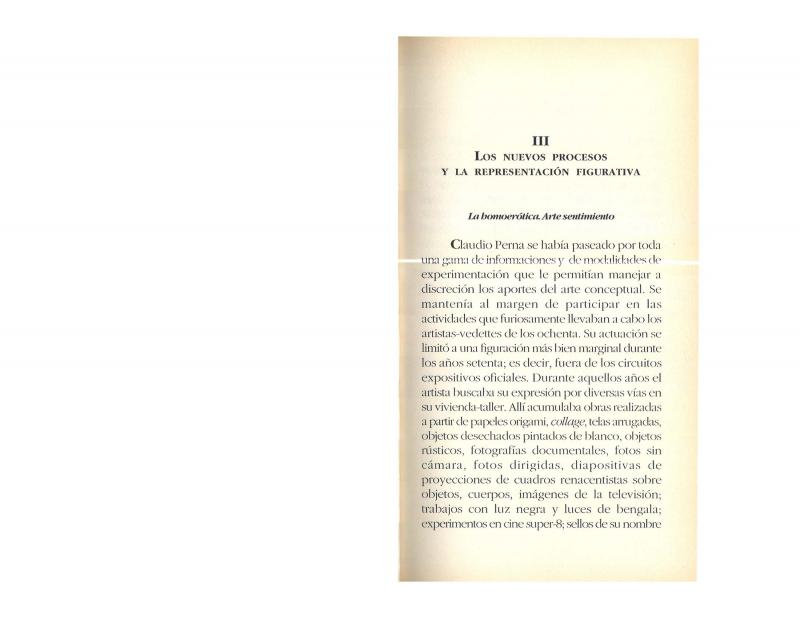The exhibition Venezuela desde el cielo by the Italo-Venezuelan geographer and conceptual artist Claudio Perna (1938–97) was an important moment in the dissemination of “new languages” in Venezuela. Taking place in 1992, it was the first event to use the alternative spaces at the Ateneo de Valencia (State of Carabobo), whose institutional facilities had been expanded in 1991. Within the conceptual art trend, Perna’s work certainly represented one of the most interesting approaches among what were called the “new languages.” This circumstance was pointed out in this review published in El Nacional three days before the opening of the exhibition. The journalist notes that as of the following Sunday, the space would be converted into a series of classrooms, a space for meetings and for exchange of information. The article lists the techniques used by Perna that are characteristic of new languages: “slides, Renaissance paintings projected on nude bodies, stamps with his name printed on drawings, teamwork with other artists, “and all this to let us know that an artwork is a document and information to be used by the community.”
For the most part, the review fulfilled its function; unfortunately, as often happens with brief newspaper articles, there were ideas left without analytical development due to space limitations. Such is the case with the last lines of the article, whose content is controversial and might have opened up a discussion between anthropologists and other social scientists: “For now, Claudio Perna awaits the arrival of the viewers with one sentence: ‘Material poverty provides great spiritual and creative riches. There is nothing more useful to a human being than poverty.’”
For other texts on this artist, see in the ICAA digital archive by Margarita D’Amico “1: Hoy es arte lo que no era” (doc. no. 1068360); by Luis Enrique Pérez-Oramas “El autocurrículum de Claudio Perna, escultura social y novela hiperrealista” (doc. no. 1161917); by Roberto Guevara “Claudio Perna o cómo ser libre en la marginalidad” (doc. no. 1080814); by Elsa Flores (untitled) [“Vivir quiere decir dejar huellas…”] (doc. no. 1063156); by María Elena Ramos “Arte–idea–geografía” (doc. no. 1080766); by Mara Comerlati “Claudio Perna. Lo fundamental es inventar. Este domingo expondrá más de cincuenta dibujos en la Sala Mendoza” (doc. no. 1068403); by José Napoleón Oropeza “Claudio Perna. Disfruto el estilo de no tener estilo” (doc. no. 1067382); and by Lourdes Blanco “Claudio Perna: fotocopias” (doc. no. 1080715). Also available are the following texts written by Zuleiva Vivas: “Las opciones del tiempo para el nuevo espíritu” (doc. no. 1065674); “Visión panorámica de las nuevas cartografías” (doc. no. 1157158); “Los nuevos procesos y la representación figurativa” (doc. no. 1157174); “Intervención creativa en el contexto social” (doc. no. 1161969); and “Claudio Perna y el arte del pensamiento” (doc. no. 1163950)].













